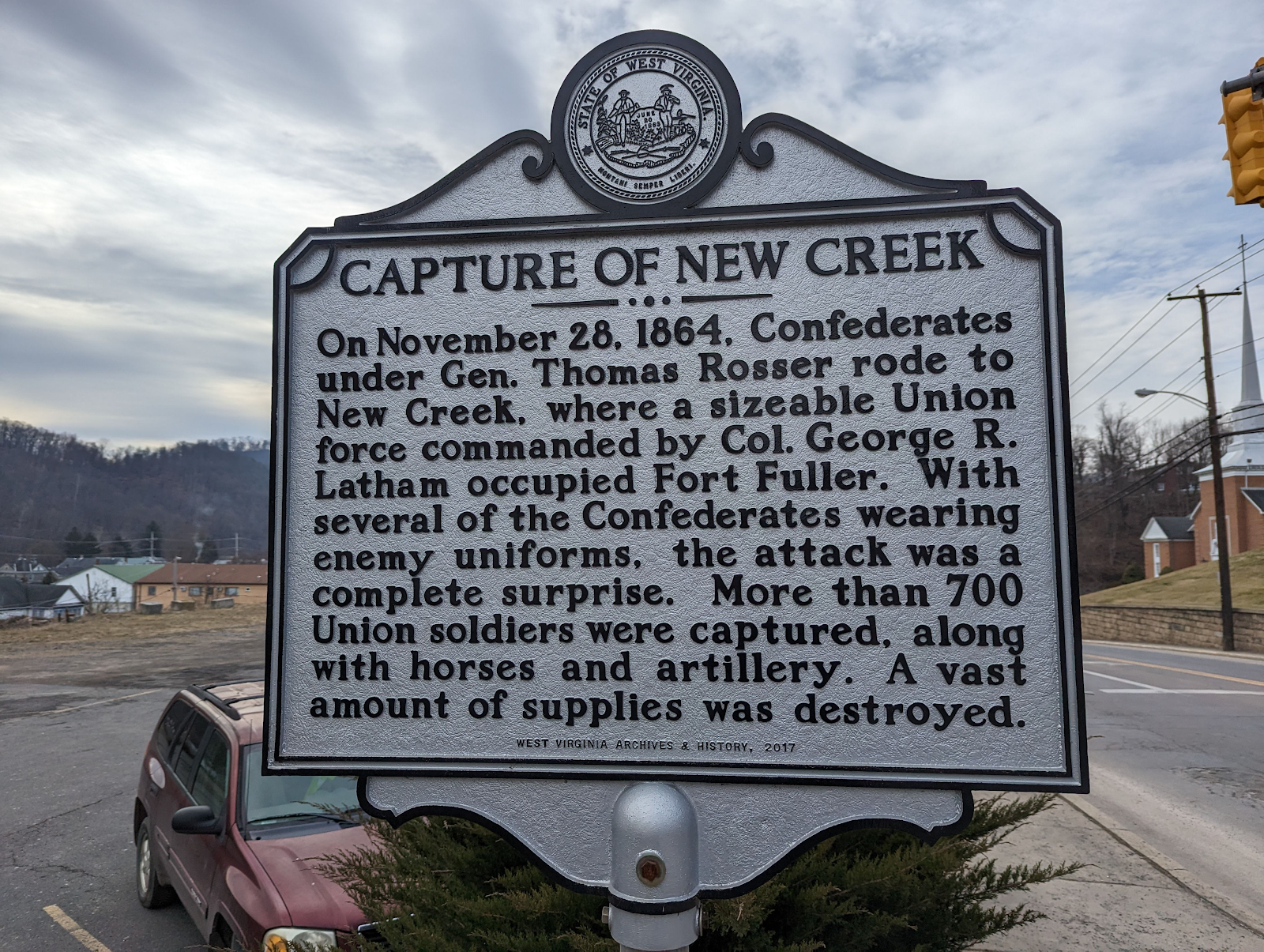Sept, 17, 1864 - Grant and Sheridan meet in Charles Town plus Edge Hill Cemetery
Sept, 18, 1864
Grant and Sheridan at Rutherford House (AKA The Stribling House)
Charles Town, West[ern] Virginia
 |
| Plenty left to still see in this portion of West Virginia, on my way to the mountains (2024) |
 |
| https://www.hmdb.org/m.asp?m=238786 |
Rutherford House
“Go in!”
— 1864 Valley Campaign —
The Federal offensive in the Shenandoah Valley begun in May 1864 faltered in the summer with Confederate victories and Gen. Jubal A. Early's Washington Raid in July. Union General Philip H. Sheridan took command in August, defeated Early at Winchester in September and Cedar Creek in October, burned mills and barns, and crushed the remnants of Early’s force at Waynesboro on March 2, 1865. Sheridan’s victories contributed to President Abraham Lincoln’s reelection in November 1864 and denied Gen. Robert E. Lee’s army much needed provisions from the “Breadbasket of the Confederacy.”
This house belonged to Thomas and Mary Rutherford in 1864, when a historic meeting occurred here on September 17 between Union Gens. Ulysses S. Grant and Philip H. Sheridan. Grant was eager for Sheridan to drive the Confederates under Gen. Jubal A. Early from the Shenandoah Valley, to protect Washington and the North from another invasion, and also to keep open both the Baltimore and Ohio Railroad and the Chesapeake and Ohio Canal. He decided to visit Sheridan in person rather than send orders through channels in Washington, fearing delays. He left Petersburg, Virginia, on September 15 and avoided the capital.
Grant was waiting when Sheridan strode up to the porch at noon. They retired to the east parlor. Sheridan revealed that a Unionist Quaker schoolmistress, Rebecca Wright, had informed him that Early’s army had just been reduced by a division detached to defend Richmond. The time was right to launch an offensive. Grant reiterated his earlier directive to destroy foodstuffs in the Shenandoah Valley and then verbally issued the shortest order of his career: “Go in!”
Grant hoped that Sheridan could move in four days; instead, he moved in three, attacking Early’s army at Winchester on September 19 and defeating it soundly. A month later, on October 19, when Early counterattacked at Cedar Creek, Sheridan turned a morning defeat into an afternoon victory. In between the two battles came “The Burning,” as Sheridan carried out Grant’s orders and brought devastation to a large part of the lower Valley.
Thomas and Mary Rutherford were reluctant hosts to the Federal commanders on September 17. Their situation was precarious. The house of their neighbor Andrew Hunter was burned only weeks before for his Confederate sympathies, which they shared. Their daughter, Virginia, had earlier bought a Virginia state flag for presentation by "The Ladies of Jefferson County" to the 2nd Virginia Infantry regiment in Gen. Thomas J. "Stonewall" Jackson’s brigade. Jackson eventually returned the flag to Virginia Rutherford, who secreted it in the house until the end of the war. It is now on display at the Virginia Military Institute.
* * *
Edge Hill Cemetery
John Brown Raid Victims
Edge Hill Cemetery contains the graves of Fontaine Beckham and John Avis, two participants in the saga of John Brown’s Raid in October 1859. Beckham was the mayor of Harpers Ferry then and one of four civilian casualties. Ironically, though John Brown freed no slaves by capturing the United States Arsenal there, as he intended, the slaves that Beckham owned were feed at his death in accordance with his will. The first civilian that Brown’s men shot and killed was a free black man named Hayward Shepherd, a Baltimore and Ohio Railroad employee.
John Avis, John Brown’s jailor, is also buried here. Avis was kind to Brown while he was incarcerated for a month between his trial and execution and befriended him. As Brown left the jail to be hanged, he kissed Avis’s son. The jailor served as a captain in an antebellum militia company, the Continental Morgan Guards. When the Civil War began in 1861, the company, which wore Revolutionary War-style uniform, was mustered into Confederate service as Co. K, 5th Virginia Infantry.
About seventy graves in the front section of Edge Hill Cemetery contain the remains of Confederate soldiers. They died in local hospitals from wounds suffered at nearby Sharpsburg, Maryland, on September 17, 1862, in the Battle of Antietam. Most of the soldiers were from North Carolina and South Carolina.
 |
| https://www.hmdb.org/m.asp?m=103464 |
Erected
to the memory of the
Confederate Dead
April 26, 1871
by the
Lee Memorial Association
of Jefferson County
———————
There's grandeur in graves, there's glory in gloom
For out of the gloom, future brightness is born.
As, after the night Looms the sunrise of morn.
And the graves of the dead with the grass overgrown,
May yet form the footstool of Liberty's throne.
And in each simple wreck in the way-path of might
Shall yet be a rock in the temple of right.
[from Abram Joseph Ryan's A Land Without Ruins]
———————
It is sweet and honorable
to die for one's country
———————
In life united in the the discharge
of patriotic duty, in death
they ought not to be separated
I'll be back for more about John Brown...










Comments
Post a Comment